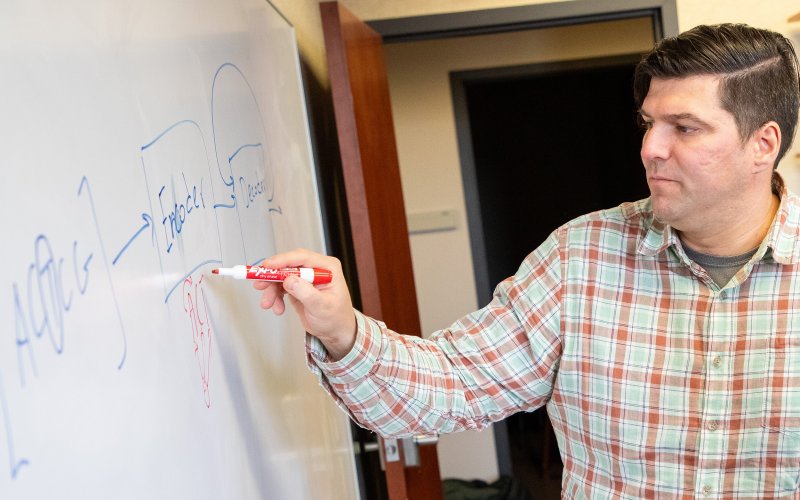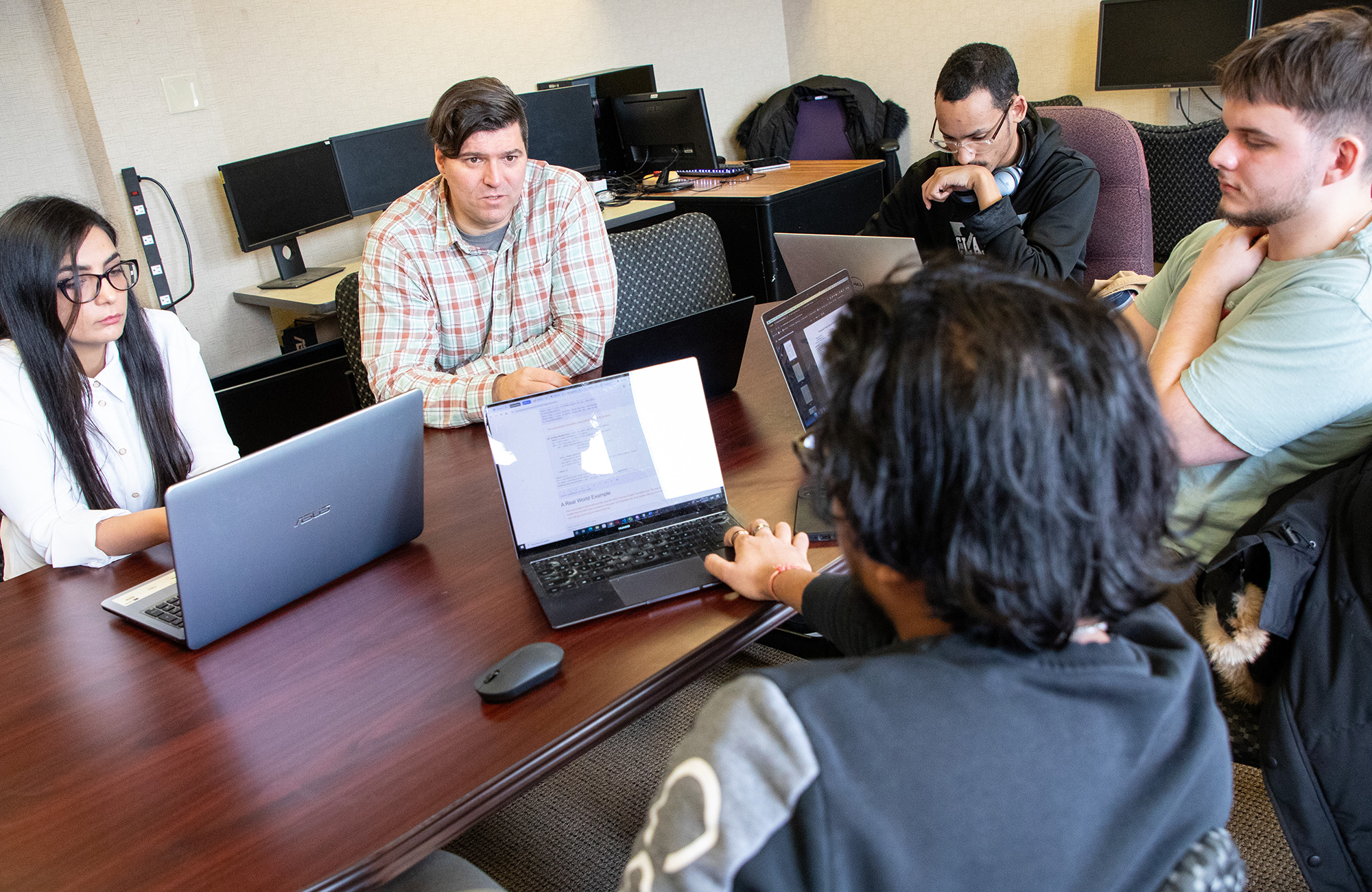CNSE Scientist Aims to Improve Deep Tissue Imaging

ALBANY, N.Y. (April 25, 2024) — From treating injuries to tracking cancer, the field of deep tissue imaging provides tools for doctors and scientists to improve human health. Now, UAlbany Associate Professor of Computer Science Petko Bogdanov is part of a multi-institution effort that hopes to revolutionize the field with a new class of near-infrared contrast agents designed with the help of artificial intelligence (AI) to provide an even greater level of detail.
The research is supported through funding from the Chan Zuckerberg Initiative (CZI), created in 2015 by Priscilla Chan and Mark Zuckerberg to help solve some of society’s most difficult challenges, including eliminating disease and improving education. Bogdanov’s project, “Molecular Deep Tissue Imaging in the NIR-II Transparency Window,” is in partnership with UC Irvine Assistant Professor of Materials Science and Engineering Stacy Copp and Northwestern Professor of Chemistry Nathan Gianneschi.
The project is part of CZI’s Frontiers of Imaging initiative, which aims to advance scientists’ understanding of biological systems through imaging technology. As described by CZI, “this means imaging across biological scales and in the necessary context, such as viewing protein interactions inside a cell or cell signaling in the living system — tasks that are mostly beyond current capabilities.”
That’s where Bogdanov and his partners come in.
“Our team seeks to enable light-based deep tissue imaging in the second near-infrared tissue transparency window. In this spectral window, at wavelengths of light above 1,000 nm, biological tissues and fluids become far more transparent to light, but there is a current lack of small, bright, nontoxic, and chemically versatile fluorophores that operate in this window,” explained Bogdanov. “By harnessing an emerging class of DNA-templated nanoclusters together with machine learning-guided design strategies and biomolecular chemistry, we will develop and characterize a new class of near-infrared contrast agents.”
The new contrast agents could then be applied to several fields, such as investigating novel cancer therapeutics.
“We hope that this new technology will not only revolutionize cancer research and treatment but will also serve as a versatile research and clinical tool for advancing biomolecular science and human health,” said Bogdanov.
“Professor Bogdanov’s work on discovery of new contrast agents using AI has tremendous implications in imaging tissues in wide range of fields, from image-guided robotic surgery to helping surgeons better understand cancer tissue margin during surgery,” said Vice President for Research and Economic Development Thenkurussi (Kesh) Kesavadas. “We applaud CZI for funding projects which will shape the future of medicine. Here at UAlbany we are excited to contribute to the AI revolution in medicine.”
“AI has been recognized as an important tool in managing and making decisions based on the vast amount of data that can be generated from medical tests and monitoring,” said College of Nanotechnology, Science, and Engineering Dean Michele J. Grimm. “The work that Dr. Bogdanov and partners are doing shows another key application for AI and machine learning in the world of medicine and biomedical engineering – helping engineers and scientists narrow down the near-infinite possibilities involved with design of new molecules for image enhancement, drug delivery, or synthetic biology. Being able to focus on the variants that are most likely to meet the established goals and constraints of the design process will significantly shorten the time needed to translate advancements from the bench to actual clinical application.”
The new nanocluster contrast agents are templated by DNA molecules and exhibit fluorescence properties that are tuned by DNA sequence. However, choosing the right DNA sequences that are ideal for biomedical imaging can itself be a major challenge, due to the enormity of the DNA sequence space. The UAlbany team will be responsible for addressing this challenge by developing AI models to discover and tune the properties of the DNA nanocluster probes.
“To tackle this major design challenge, our team includes expertise in nanocluster and biomolecular conjugate chemistry together with machine learning for materials design and state-of-the-art facilities for high-throughput experimental screening,” continued Bogdanov. “This nontraditional and cross-disciplinary approach will enable us to rapidly develop this novel deep tissue imaging technology.”
The project holds the potential to fundamentally change the field of deep tissue imaging.
“The fluorescent probes we are developing will dramatically advance technologies that use nonhazardous near-infrared light for deep tissue imaging, with both fundamental science and applied biomedical applications,” said Bogdanov. “In the context of cancer research and therapeutics development, this new imaging method could aid surgical tumor resection, provide for a more targeted radiation therapy and dramatically improve the efficacy of cancer treatment.”
Bogdanov also intends to utilize the supercomputing infrastructure now in place at UAlbany through the AI Plus initiative. Supported by a $75 million investment from New York State, the University is significantly expanding its AI footprint through new academic programs, research and hardware.
A new collaboration between UAlbany and IBM on the Center for Emerging Artificial Intelligence Systems resulted in UAlbany being the first university in the world to host an IBM Artificial Intelligence Unit computing cluster designed specifically for AI inferencing.
Simultaneously, UAlbany is building another supercomputing cluster powered by advanced NVIDIA DGX hardware that gives students, faculty and staff access to some of the fastest and most powerful computers available.





